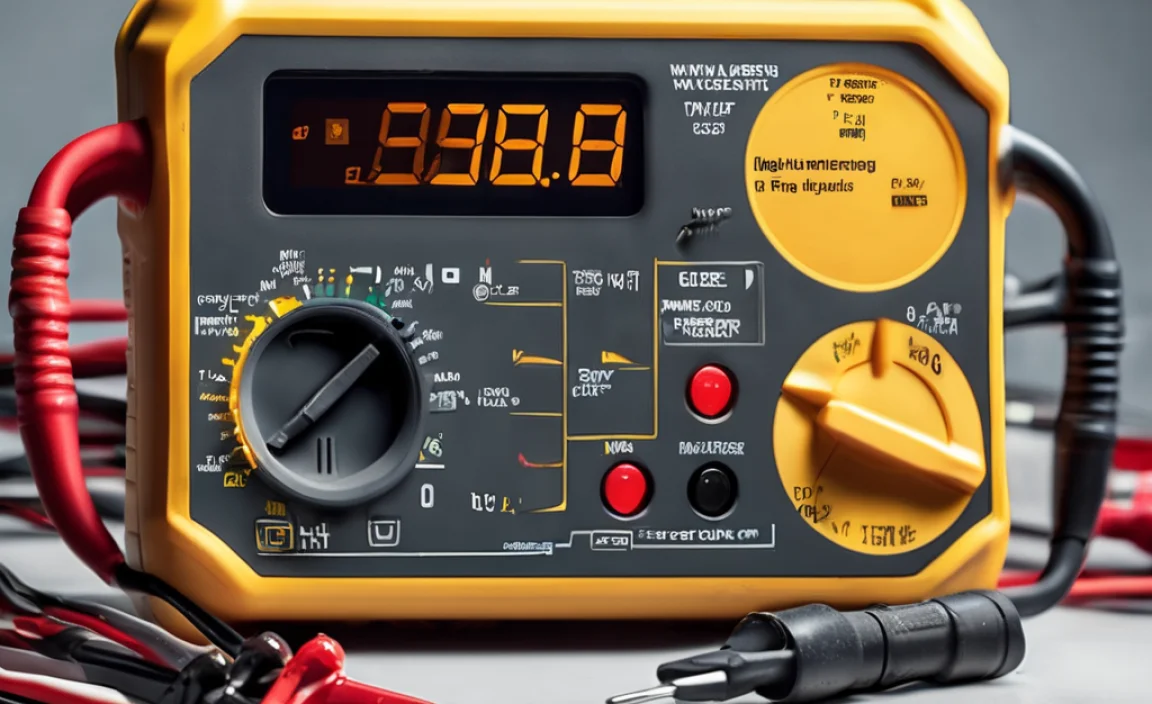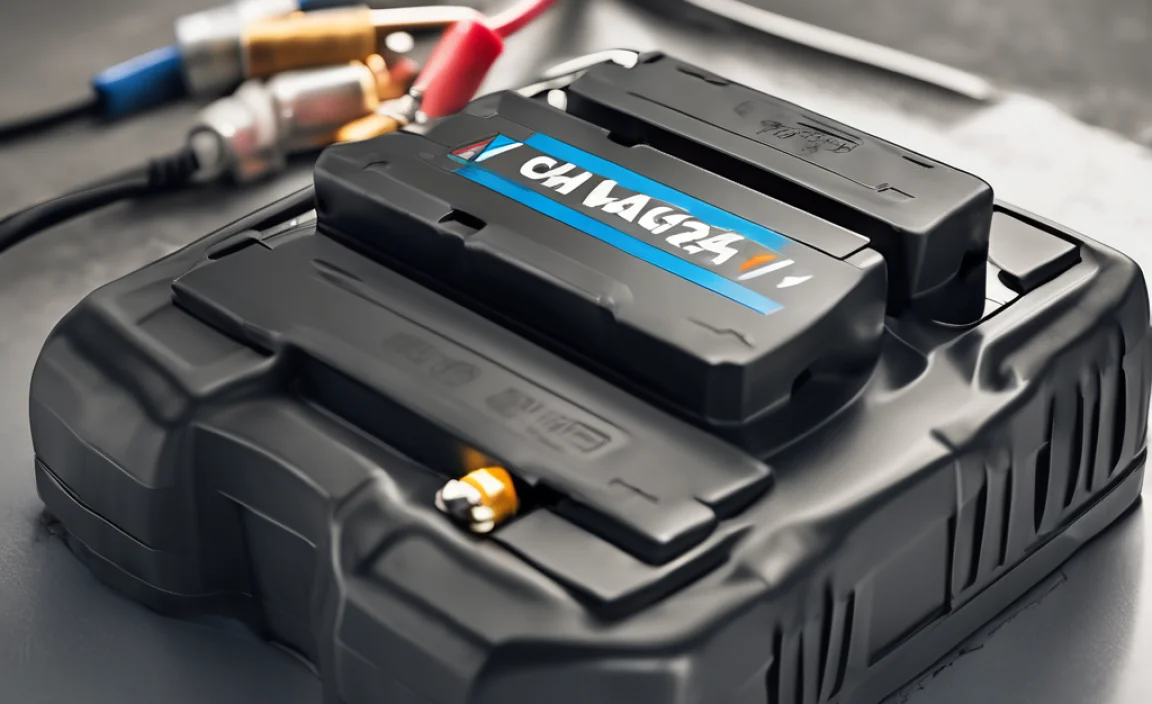Digital multimeters are essential tools for car enthusiasts and professionals, providing precise measurements of car battery voltage and overall vehicle electrical system health. By understanding how to use a digital multimeter effectively, car owners can ensure their vehicles operate optimally and avoid unexpected breakdowns. This guide will explore the essentials of using a digital multimeter for car batteries, its importance, and practical steps to harness its full potential.
What is a Digital Multimeter for Car Battery?

A digital multimeter is a versatile electronic measuring instrument that combines several measurement functions in one unit. For car batteries, it is particularly useful for measuring voltage, current, and resistance, helping diagnose electrical issues and ensuring the battery’s health. These devices are widely used by both amateur and professional mechanics for their accuracy and reliability. Understanding how to effectively operate a digital multimeter is crucial for maintaining your car battery’s performance.
Features of Digital Multimeters
- Voltage Measurement: Measures the potential difference between two points in an electric circuit.
- Current Measurement: Determines the flow of electric charge in the circuit.
- Resistance Measurement: Calculates the opposition to the flow of current in the circuit.
- Continuity Check: Tests if a connection is complete.
- Auto-ranging: Automatically selects correct range for measurement.
- Digital Display: Provides clear, easy-to-read results.
Digital multimeters are invaluable for car owners because they provide accurate readings that can diagnose potential battery issues, saving time and money on unnecessary repairs.
Why Digital Multimeter for Car Battery is Important?
Maintaining the health of your car battery is essential for ensuring reliable vehicle operation. A digital multimeter is a crucial tool for this task, offering significant advantages over other methods. Proper use of a digital multimeter can prevent battery failures and extend the battery’s lifespan, ultimately saving costs and enhancing safety.
Benefits of Using a Digital Multimeter for Car Batteries
- Accurate Diagnosis: Provides precise measurements to identify potential battery issues.
- Cost-Effective: Prevents unnecessary battery replacements by diagnosing the actual problem.
- Efficiency: Quick and easy to use, saving time in troubleshooting.
- Versatility: Can measure voltage, current, and resistance, offering a comprehensive view of the battery health.
- Portability: Compact design makes it easy to carry and use anywhere.
Using a digital multimeter is a smart choice for car owners who want to proactively manage their vehicle’s health, ensuring reliability and safety on the road.
Step-by-Step Guide to Using a Digital Multimeter for Car Battery
Step 1: Prepare the Digital Multimeter
- Inspect the Multimeter: Ensure it is in good working condition with no visible damage.
- Check Battery Levels: Make sure the multimeter’s internal battery is charged.
- Select the Correct Setting: Turn the dial to the DC voltage (V) setting.
Before starting, make sure the digital multimeter is functioning correctly and set to measure DC voltage, which is required for car batteries.
Step 2: Connect the Probes
- Red Probe: Insert into the VΩmA port for voltage measurement.
- Black Probe: Insert into the COM port.
- Secure Connections: Ensure the probes are firmly connected to the multimeter.
Proper connection of the probes ensures accurate readings. The red probe measures positive voltage, while the black probe serves as the ground or negative.
Step 3: Measure the Battery Voltage
- Turn Off the Car: Ensure the vehicle is off to get an accurate resting voltage.
- Place Probes: Red probe on the battery’s positive terminal, black probe on the negative terminal.
- Read the Display: Check the digital screen for the voltage reading.
Measuring the resting voltage gives you an initial look at the car battery’s condition. A healthy battery should read around 12.6 volts or higher.
Step 4: Test Battery Under Load
- Start the Car: Turn on the engine to apply a load to the battery.
- Repeat Measurement: Measure the voltage under load using the same probe placement.
- Analyze Results: A healthy battery should not drop below 10 volts under load.
Testing the battery under load helps determine its ability to perform under stress, providing insight into its real-world performance.
Alternative Methods and Tools
Hydrometer Testing
- Measures Specific Gravity: Indicates the state of charge for each cell.
- Requires Battery Access: Only usable with accessible battery cells.
A hydrometer provides a detailed assessment of each cell’s charge state but requires access to individual cells, making it less convenient than a digital multimeter.
Battery Load Tester
- Simulates Load: Applies a fixed load to the battery to test its performance.
- Quick Results: Provides immediate insight into the battery’s condition.
Battery load testers are effective for quick assessments, but they can be more expensive and less versatile compared to digital multimeters.
Troubleshooting Common Issues
Issue: Incorrect Voltage Reading
- Check Probe Connection: Ensure probes are securely connected to the terminals.
- Inspect Multimeter Settings: Confirm the multimeter is set to the correct voltage setting.
If you encounter incorrect readings, verify the probe connections and multimeter settings as these are common sources of error.
Issue: Multimeter Does Not Turn On
- Check Battery: Replace or recharge the multimeter’s battery.
- Test Power Button: Ensure the power button is functional.
A non-functional multimeter often stems from a drained battery or a faulty power button. Address these areas first before seeking professional help.
Advanced Techniques
Optimization of Multimeter Usage
- Regular Calibration: Calibrate your multimeter periodically for accuracy.
- Use Quality Probes: Invest in high-quality probes to enhance measurement precision.
Optimizing your multimeter ensures reliable and accurate measurements, which is crucial for diagnosing car battery health effectively.
Prevention & Maintenance Tips
- Regular Checks: Use the multimeter to regularly check battery voltage.
- Clean Terminals: Keep battery terminals clean to ensure accurate readings.
- Monitor Multimeter Battery: Regularly check and replace the multimeter’s battery.
Consistent maintenance, including regular voltage checks and clean battery terminals, can prolong your car battery’s life and ensure your multimeter remains effective.
Real-Life Examples
John, a car enthusiast from Texas, regularly uses his digital multimeter to monitor his vintage car’s battery health, preventing issues before they arise.
Emily, a professional mechanic, noted a significant drop in customer complaints after incorporating digital multimeter checks into her routine inspections.
According to Reportlinker 2024, 68% of mechanics have reported improved diagnostic accuracy with the use of digital multimeters.
Comparison of Diagnostic Tools for Car Batteries
| Method | Difficulty | Speed | Best For | Notes |
|---|---|---|---|---|
| Digital Multimeter | Medium | Fast | General Use | Provides comprehensive measurements |
| Hydrometer | High | Moderate | Detailed Cell Analysis | Requires access to battery cells |
| Battery Load Tester | Low | Very Fast | Quick Assessment | Less versatile than multimeters |
Conclusion
Understanding and using a digital multimeter can profoundly impact the maintenance and performance of your car battery. By following the comprehensive guide above, you can enhance your car’s reliability and safety, avoiding costly breakdowns. Make the digital multimeter an integral part of your vehicle maintenance toolkit and experience the peace of mind that comes with knowing your car battery’s precise state.
Frequently Asked Questions
Question 1: How Do I Set Up a Digital Multimeter for a Car Battery?
Answer: Ensure the multimeter is set to DC voltage, connect red and black probes to their respective terminals, and ensure the device is functioning correctly.
Question 2: What Voltage Should a Car Battery Read?
Answer: A fully charged car battery should read around 12.6 volts when the car is off.
Question 3: Can a Digital Multimeter Test Battery Health?
Answer: Yes, it can measure voltage and under-load performance to assess battery health.
Question 4: Why Is My Multimeter Not Giving Accurate Readings?
Answer: Check probe connections, ensure correct settings, and verify that the multimeter’s battery is charged.
Question 5: Can a Multimeter Measure Amps on a Car Battery?
Answer: Yes, but it requires careful setup to avoid damaging the multimeter. Always refer to the manual.
Question 6: Are Digital Multimeters Better Than Analog for Car Batteries?
Answer: Yes, digital multimeters provide more precise and easy-to-read measurements.
Question 7: How Often Should I Test My Car Battery?
Answer: Regular checks, at least bi-annually, or before long trips, are recommended to ensure battery health.
Question 8: Can I Use a Digital Multimeter on Other Vehicle Components?
Answer: Yes, it can also test other electrical components such as alternators and fuses.
Question 9: What Is the Warranty Period for Digital Multimeters?
Answer: Warranty periods vary; check with the manufacturer, but typically range from 1 to 3 years.

